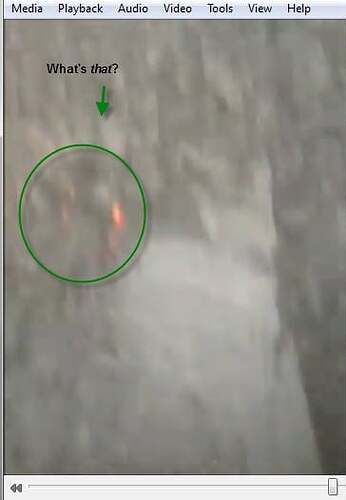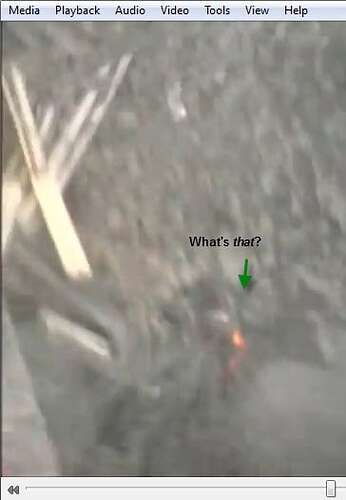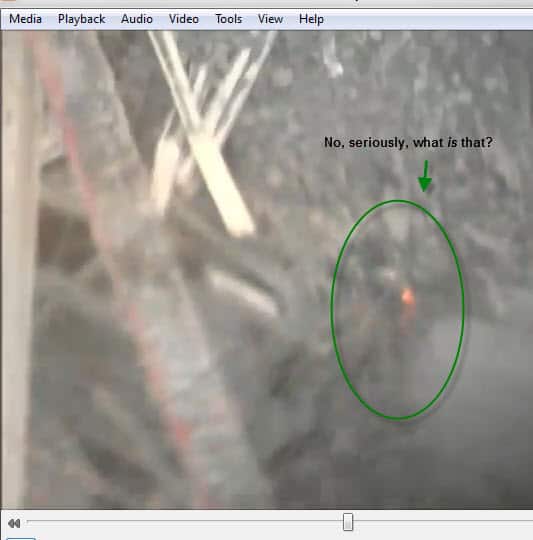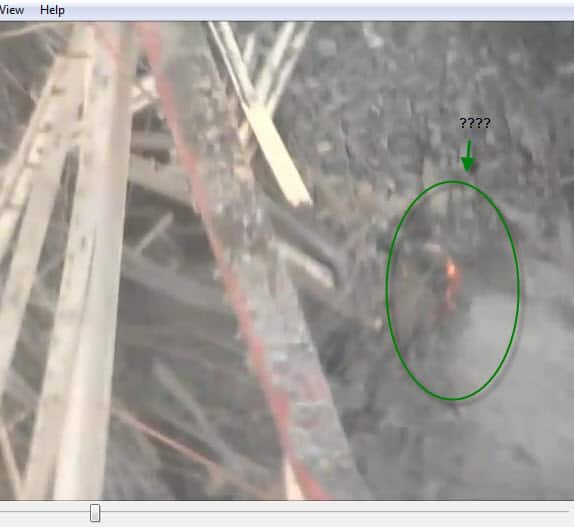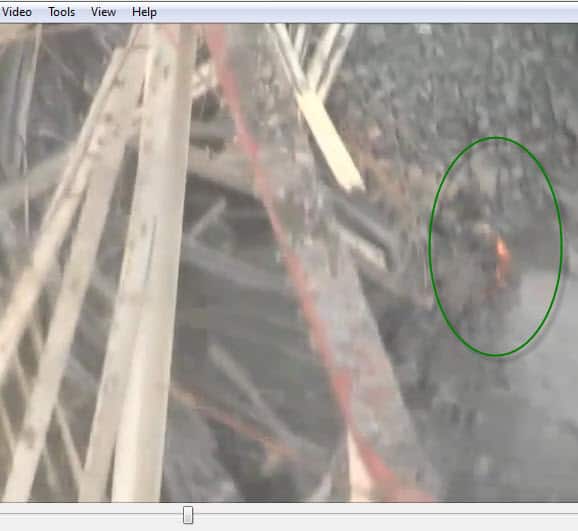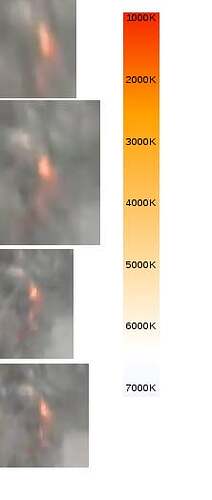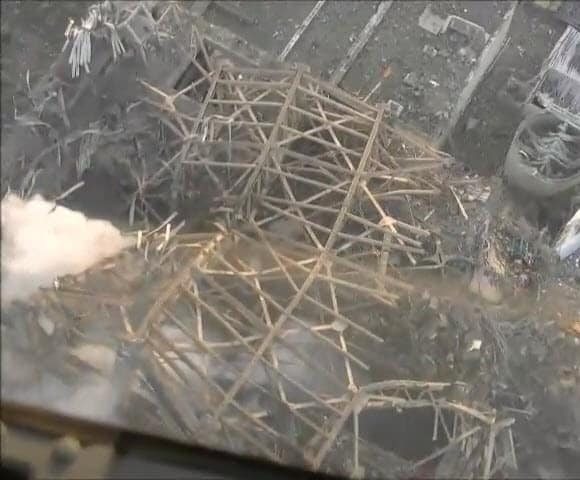Well, it now turns out that many of my worst fears about Fukushima have been confirmed with the news that TEPCO has finally admitted that Reactor #1 has experienced a meltdown event that may have breached the primary containment vessel. Further, truly alarming levels of radiation are now being reported in and around Tokyo.
The prospects for containing the situation at Reactor #1 are now much dimmer than previously admitted. A melted core is far more difficult to cool because the geometry of the slag heap at the bottom is not nearly as favorable as long thin tubes around which water can be relatively easily circulated.
Worse, if the slag has either melted through the primary containment vessel or somehow leaked out through a fitting that has failed, then the ability to circulate water is even more compromised.
Partial meltdown hits Fukushima nuclear plant
Friday, 13 May 2011
Uranium fuel in at least one of the six reactors at Fukushima has melted, the operator of the crippled nuclear plant has said. The admission effectively torpedoes a plan to flood the overheating fuel with water and bring a quick end to the worst nuclear crisis since Chernobyl.
Tokyo Electric Power Co (Tepco) said water levels have fallen at least one metre below fuel rods inside Reactor 1 and that melted fuel has dropped to the bottom of the reactor's containment vessel. Engineers are working inside the reactor building for the first time since the crisis began when a hydrogen explosion blew off its roof following the huge quake and tsunami on 11 March.
Tepco general manager Junichi Matsumoto told reporters in Tokyo that the discovery means its timetable to entomb the containment reactor vessel in water may have to be scrapped. "We can't deny the possibility that a hole in the pressure vessel caused water to leak," Mr Matsumoto said.
Observers fear that Reactor 3, which contains MOX plutonium fuel, may have also suffered a meltdown, and the situation inside Reactor 2 is still shrouded in mystery.
The idea that fuel rods have melted (a process that begins at around 2,600 degrees F but requires 3,400 degrees F in order to melt the zircaloy cladding) coupled with the admission that the roughly 5-inch-thick steel containment vessel have been breached (presumably by being melted through) is completely, utterly, and inexcusably at odds with the temperature data TEPCO has released to date for the core.
At no time has TEPCO ever reported a temperature higher than ~750 degrees F (400C), and it has more typically reported primary containment temperatures barely one third that high.
With steel being an excellent conductor of heat, it is just simply not possible for melting to occur and for the reported temperatures to have been that low. Either something as basic as temperature monitoring is out of the realm of the possible for TEPCO's engineers (with troubling implications for where we really are in this unfolding disaster), or TEPCO has been falsifying the temperature data that it has been releasing.
This, too, has troubling implications, for it means that the rest of the data - including the radiation readings and isotopes discovered - are all suspect, too. Neither bodes well, so pick your poison.
I am now very suspicious of the water level data, as well, because TEPCO is now admitting (sort of) that that they can't deny the possibility that there's a hole in the primary containment vessel. Unless that hole is magically at the same level as the water readings, there's something wrong with their water level data. The process I am imagining is that the core melted down and somehow punctured or penetrated the bottom of the vessel. If true, then the water level in there is essentially zero, not "one meter below the fuel rods," as claimed.
Sadly, the news that the reactor melted down simply confirms a piece of analysis I performed in a special report for enrolled members back on March 21, 2011.
Worrying Images From Helicopter 'Over Flight' Video
Last week we analyzed a few stills from the helicopter fly-over. This morning I came across this next video, which at first I thought was the same, but I quickly realized it had additional footage taken from the beginning of the fly-over that I had not yet seen. It also seems to have slightly different views than the prior one, so it may be a different video shot with a different camera taken during the same flight (the final images of Reactor #4's smoke line up). It has an enormously interesting but troubling feature in it that I only discovered by crawling through the video frame by frame (that's how desperate I am for any hard information about the reactors).
Here's what I found. Between seconds 30 and 31 in the video, as it scans across the rubble of Reactor #1 (presumably; orientation is not easy at this part of the video), we see a fissure that appears to be emanating a bright white-orange light. The link is here (better hurry, I bet this one gets pulled too), and I've arranged some stills from the video below. They are presented in series, meaning the top one is from second 30 of the video progressing to the bottom one from second 31.
In all, we have numerous frames taken from quite different angles, some in and some out of focus, indicating that what we are looking at is not a video anomaly caused by light reflecting off of some bent metal or other such artifact.
(Watch the video here while you still can. Again, these come from the 30 and 31 second mark.)
Okay folks, that looks very much like a hot spot. A very hot spot. If we knew what it was made out of, we could probably identify it to within a few degrees of its actual heat value, but we don't know what it is (besides a fissure that is glowing at an orange-white temperature).
But I am disinclined to believe it is a normal fire burning up normal materials, because there have been no reports or videos or photos showing smoke emanating from this reactor. Still, it remains one possibility.
Another less-desirable but not dismissible possibility is that it is coming from some sort of nuclear reaction, be it residual decay heat or even a meltdown-driven process. We just don't have enough information to tell, and the authorities have been less than forthcoming with this bit of information.
A seat-of-the-pants analysis, which borders on the irresponsible because we don't know anything about the camera, its settings, or what is emitting the light, allows us to speculate that the temperature of the hot spot is well over 1,000 degrees Celsius. If it were metal, say iron, glowing that color, our guess would be in the vicinity of 5,000 degrees Celsius.
Here are several views of the glowing spot against a black-body temperature chart (note that a Kelvin is the same thing as a Celsius but they start at different place…zero for Celsius is freezing water and for Kelvin it is absolute zero. To convert, just subtract -273 from the Kelvin scale and you've got Celsius).
Of course, we have no idea about what is glowing down there, so it is impossible to say anything for sure, besides, "That's a very hot spot."
It is not yet time to turn our attention off of this situation. Yes, it is good news that nothing else seems to have exploded or gone much worse in a few days, and for that I am grateful and hopeful. But the utter lack of information leaves me concerned that something is being hidden from our view.
No Chance of Hooking Up All The Pumps
One stated goal of the authorities is to hook up the pumps in Reactors #1, 3, and 4. A power line has been brought in, and this is supposed to provide hope.
Also in that helicopter fly-over was a nice stable view of Reactor #3 from the air. Please look at this and decide for yourself how likely it is that the pumps and wiring and plumbing are all in place to allow for the pumps to be turned on any time soon.
It was only yesterday that functions were fully checked out and restored in the control room - a building that didn't get turned to rubble. Therefore, we might question just how quickly the systems might be restored at the decimated reactor structures, especially if the repair crews are operating out of a Type 74 main battle tank.
My conclusion from this line of thinking is that while we should still hope for speedy restoration of systems, we should plan as if weeks and months might be involved.
As it turns out, we now have a reasonable understanding of what the 'crack of doom' probably was: the heat signature from a melting core. The title of the piece quoted above is "Japanese Reactor Situation Far Worse Than Admitted," and I guess we can now say that the admissions are finally catching up with what we already knew.
As always, trusting our own abilities to know what we are looking at and make reasonable guesses turns out to be the right course of action, especially during times when official sources have conflicts of interest in being truly open and honest.
I use the term "official sources" loosely because it is also true that it was not just TEPCO that had access to the heat signature data detected above. It must also be true that the US, which conducted numerous fly-overs with sophisticated detection packages, had this information as well.
We had clues about this when the NRC official made an at-the-time shocking statement that a partial meltdown had 'probably' occurred.
Japanese officials detect radioactive incinerator ashes in Tokyo, other prefectures
TOKYO, May 13 (Xinhua) -- A radioactive substance of up to 170,000 becquerels per kilogram was detected in incinerator ashes at a sewage plant in Koto Ward, east Tokyo, in late March, the Kyodo News Agency quoted government sources as saying Friday.
The highly-contaminated ashes were discovered following the nuclear crisis at the Fukushima No. 1 nuclear plant which escalated through March as a hydrogen explosion exacerbated the disaster and highly radioactive water was both discharged and found to be freely flowing into the Pacific Ocean.
The ashes have since been recycled into materials used for construction, such as cement, sources with knowledge of the matter said.
In addition, the sources revealed that also in late March a radioactive substance, which may or may not have been cesium, measuring 100,000-140,000 becquerels per kg, was found in two other separate sewage facilities in the Itabashi and Ota areas of Tokyo.
Separately on Friday, the local government of Maebashi, the capital city of Gunma Prefecture, said radioactive cesium of 41,000 becquerels per kg was detected in incinerator ashes collected Monday at a water sanitation facility.
This is outrageous and shocking news. First, because of the levels, and second, because these things were detected in "late March" and then hidden from the public to such an extent that the screaming hot ashes were allowed to be recycled into and used for construction materials. Now that's a cover-up.
A becquerel is one decay per second. So if you had a Geiger counter up against a radiation source that was emitting just two becquerels, you'd hear a reasonably steady tick-tick-tick-tick sound. By one hundred becquerels, you would be hard-pressed to hear the ticks as separate events - the sound would be a blurred staccato. By one thousand becquerels, it's just a squeal, and there's no point in listening anymore, as your ears are not helpful in trying to gauge the level of radiation.
Now look back at those radiation readings in the hundreds of thousands per kg. They are incredibly hot. An average brick is in the vicinity of a kilogram, so think of holding one in your hands while it emits 170,000 radioactive decays per second.
Okay, so this is a very, very hot reading.
And here's where those readings were detected:

These readings are all within a ten-mile radius of Tokyo.
Further south of Tokyo, in the Kanagawa prefecture seen to the lower left of the above image, tea was recalled:
Radiation Detected in Tea Leaves in Japan
TOKYO—A prefecture just south of Tokyo said it had detected higher-than-permissible amounts of radioactive material in tea leaves, in a reminder that Japan's radioactive-contamination problems are far from over.
The contamination—the first case in nearly a month that an agricultural product has been found tainted outside Fukushima Daiichi's home prefecture—is also the first time that any agricultural item from Kanagawa Prefecture, which includes Yokohama, was found to contain an excessive level of radioactivity.
According to Kanagawa officials, a sample of tea leaves collected May 9 from the city of Minamiashigara, in the western part of the prefecture, was found to contain 550 becquerels of cesium per kilogram in the first test; the second test of the same sample detected 570 becquerels. The difference between the two readings is within the margin of error in such tests, the officials said.
While it is a bit disturbing to have that much radiation be found that far from the Fukushima site, here we note that a Becquerel count in the 550 range is at least a number we can get out minds around. It is still far too high a reading - and I wish we knew the isotopes involved, as they are crucial to determining whether there isn't possibly a greater concern from the type of contamination vs. the radioactivity itself. By this I mean that if the contaminants involved are iodine or strontium, the greater concern is one of bioaccumulation and deposition, which can enormously magnify the health risks for a given level of radioactivity.
What the Japanese people, as well as the rest of the world, need very badly right now is one of the most comprehensive radiation and contamination mapping projects ever conducted.
If I lived over there, I would get myself a sensitive radiation/dosimeter and I would be personally scanning all of the food and water my family consumed, and my immediate surroundings as I lived, worked and played. If levels beyond what I considered safe were detected, I would then leave.
The 170,000 becquerel reading is just so far off the charts, and is so far beyond my personal safety limit, that there's a nearly 100% chance that if I were living in the Tokyo area my family and I would have left as soon as I heard the readings.
Similarly, frighteningly high levels of radiactive cesium were found in the soils around Tokyo, in amounts that are higher than those TEPCO or the Japanese government have released for most of the Fukushima prefecture itself:
Highly Radioactive Substances Detected in Tokyo
Moving on to the latest developments in Japan's ongoing nuclear crisis highly radioactive substances were detected in parts of Tokyo.
Japan's Asahi Shimbun reports about 3,200 and nearly 2-thousand becquerels of radioactive cesium per kilogram were found in the soil of Tokyo districts of Koto and Chiyoda, respectively, from testing conducted between April 10th and the 20th.
This amount is higher than what was found in the prefectures near the Fukushima plant and experts warn that other areas may be subject to radiation contamination as clusters of clouds containing radioactive material remain in the atmosphere.
One could reasonably ask how such a finding is possible this many miles away from Fukushima, given the prevailing wind patterns and the (allegedly) lower findings far closer to the plant itself. At least these tests are only a month old...perhaps someday real-time results will become available to the people of Japan.
My faith in TEPCO and the Japanese government (which blocked Greenpeace from conducting its own radiaiton sampling in Japanese territorial waters) is very close to zero.
Fairewinds Associates Has The Best Coverage
The very best ongoing coverage of the Fukushima disaster is coming from Arnie Gundersen of Fairewinds Associates. He is experienced and very, very clear about when he knows, what he suspects, and what he doesn't know. I really appreciate that approach, as you almost certainly already know.
He recently postulated that the explosion seen in the Reactor #3 complex was initiated in the spent fuel pool and was much more than a simple hydrogen explosion (which is quite obvious, really, from the video of the explosion), and was an example of what he calls a 'prompt moderated criticality'.
Without going into all the details, it is a form of what we might call a nuclear, rather than a chemical, explosion.
Significant differences exist between this type of event and what we might call a true nuclear explosion. But all the same, it was a very exothermic, high-energy release that most likely drew its power from a briefly-sustained fast neutron reaction.
As Mr. Gundersen reported, pieces of the spent fuel pool rods were found up to 2 kilometers away, implying an initial ejection speed in the vicinity of 1,000 miles per hour. But we already knew that the Reactor #3 explosion was something far more energetic than a simple hydrogen explosion, and it's good to know that there's a reasonable explanation even if it is rather frightening to know that such a thing can happen in a spent fuel pool.
By the way, this would be another example of something that many of the nuclear apologists said could 'never happen' - and yet which happened. Other examples would be breach of the primary containment, breach of the secondary containment, and large-scale release of radiation into the environment.
Also it should be noted here that a private food firm in Japan tested its own rice fields 50 km from Fukushima and detected in plutonium on far higher concentrations than any TEPCO or government tests had yet revealed (link: need to translate to English.)
The Remaining Fears
The good news is that nothing has blown up lately at the Fukushima complex, indicating some sort of stability as well as the likelihood that the reactors, while a complete mess, are not going to do anything more dramatic than they've already done.
The bad news is that Reactors #1, #2, and #3 are all really badly damaged and leaking contamination to the outside world. Pouring water on them only creates more radioactive water that will find its way into the groundwater and/or the ocean.
The fear is that the molten cores are still cooking along, slowly working their way out of first the primary containment vessels and that they might slowly eat their way out of the secondary containment vessels, too. If this happens, there will be a very real chance of extremely large-scale release of radioactive contamination -possibly in a rather vigorous manner - should some sort of re-criticality be established or just a good-old-fashioned steam explosion occur if/when the molted cores encounter water.
Can we rule out another, possibly larger, 'prompt criticality' event? No, not at this stage.
Another fear centers on the fact that we've not yet been treated to full disclosure on the amount and types of radiation released. Is there still significant iodine-131 being released more than 60 days after the beginning of this event? If so, that will mean that criticality is still going on or has recently happened? Because by this stage, more than 99% of the initial 1-131 has decayed away.
The difference between fighting the leftover decay heat and trying to deal with re-critical fuel is like night and day. The former is slowly cooling off naturally; the latter is generating heat.
So, yes, we need and deserve to know exactly what the isotopes are that are being found, in what proportions, and whether there are pockets of criticality in any of the damaged reactors.
As Predicted...
Just based on the evidence we had and the amount of damage we could see, it was obvious early on that this event would drag on for months. Now it looks like 'years' is a better guess. Certainly it is already well past the point of relevance to most news organizations, and it is hard to get good information from major news organizations outside of Japan these days.
The primary worry right now is that the situation at Fukushima Daiichi is not yet stabilized. Every time I think they have turned the corner, more news is released that indicates that there are still surprises emerging from the site.
Water escapes, unexpected isotopes are detected (I-131 in the Reactor #4 fuel pool), and meltdowns and reactor breaches are finally admitted.
Given that this is still something of a two-steps-forwards/one-step-backwards situation, we should now consider what will happen if/when a typhoon comes and blows all the contamination inland in far greater quantities than have yet occurred.
Even without renewed criticality generating fresh isotopes, the amount of material that is highly dangerous is immense.
We can hope and pray that they manage to get things under far better control before too much longer, but so far the scale of the disaster has proven a formidable foe.
Conclusion
The Fukushima situation is still not what we might call stabilized, and it may not be for some months yet, especially if re-criticality has occurred.
The amounts of radiation detected all the way south of and in and around Tokyo is alarming, especially the sludge findings in the hundreds of thousands of becquerels.
Anybody living there should invest in radiation detection equipment and begin practicing basic decontamination procedures as a matter of routine if unsafe levels are detected. Obtaining food from sources as far south and west as possible is prudent practice.
The problem is not the levels of radiation; the danger lurks in the ingestion of contamination, especially of isotopes that tend to concentrate in the body. Strontium, iodine, and cesium all have that tendency.
I wish there were better news to report, but this is the situation as it stands: Fukushima is not over, not by a long shot.
This is a companion discussion topic for the original entry at https://peakprosperity.com/fukushima-update-a-very-bad-situation-2/
